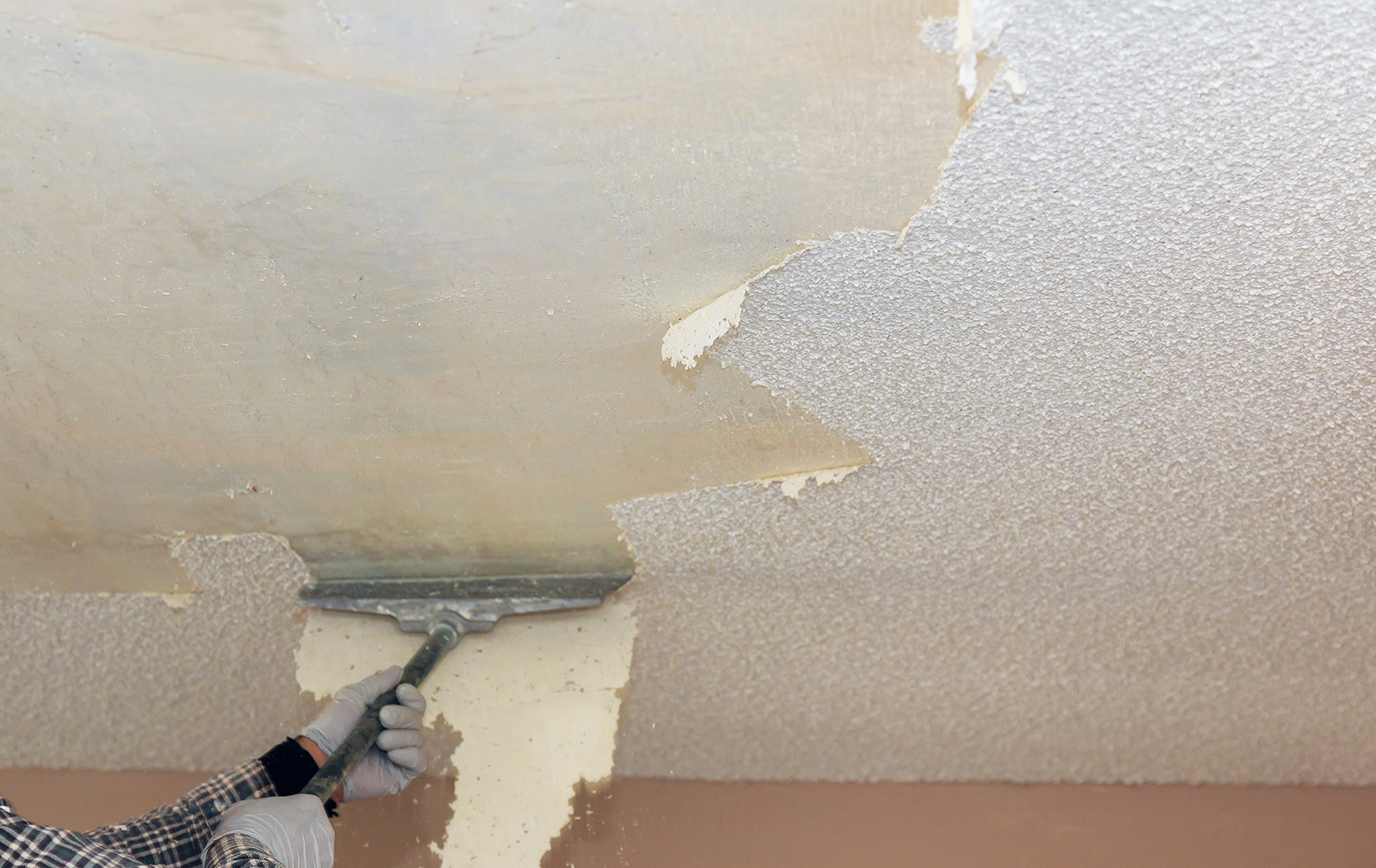
Top tips for removing Artex and other textured coatings
From woodchip wallpaper to Artex, textured coatings were a big trend in the 1960s, 1970s and early 1980s. Depending on the type of coating there are a number of options for removing or covering over the textured coating. In this article, we’ll look at some of the different options, techniques and tools that you’ll need to tackle the job.
Identify the coating
The first step to take is to identify the type of textured coating that has been used. Some cases will be obvious where woodchip wallpaper has been used while others may prove harder to identify. If you are not sure the best thing to do is use a DIY asbestos sample kit, this will tell you whether there is asbestos present. If the textured coating does not contain asbestos then it is completely safe to remove this yourself. There are a couple of ways that this can be done and these are:
Wallpaper steamer
For both woodchip wallpaper and Artex that doesn’t contain asbestos, a wallpaper steamer is an effective way to loosen the textured coating so that it can be removed with a scraper. For both woodchip and Artex, the surface coating should be scored to help the steam get behind the surface and make it easier to remove. Both Artex and woodchip wallpaper are incredibly hard to remove and will take many hours of hard work to get these off.
Chemical removal
There are many different chemical removal products on the market which can be used to help soften and help with the removal of both wallpaper and Artex. Products include Zinsser concentrated wallpaper stripper, X-Tex Artex removal or Fuze Durostrip Artex removal. These will help to loosen the coating and make it easier to strip off the wall. Like the wallpaper steaming option, this still involves a lot of hard work to remove the covering.
If removal is not an option then there are a couple of other ways that you can rid your home of Artex ceilings, walls, or woodchip coatings.
Plaster over the Artex
One of the easiest options, especially if the Artex contains asbestos is to plaster over the Artex with two or three coats of plaster. This job is one that is best tackled by a trade professional as getting a smooth finish can be difficult unless you know what you are doing. Using plaster to cover over the Artex will help seal asbestos and provide a nice smooth finish which can then be painted.
Plasterboarding
Another option for covering over your textured coating is to plasterboard over the walls and ceilings. This is a very fast, quick and easy option which will provide a perfect surface that is ready to be plastered. Because the surface will be completely flat it should only need a single layer of plaster to create a perfect finish that is ready for you to decorate.
